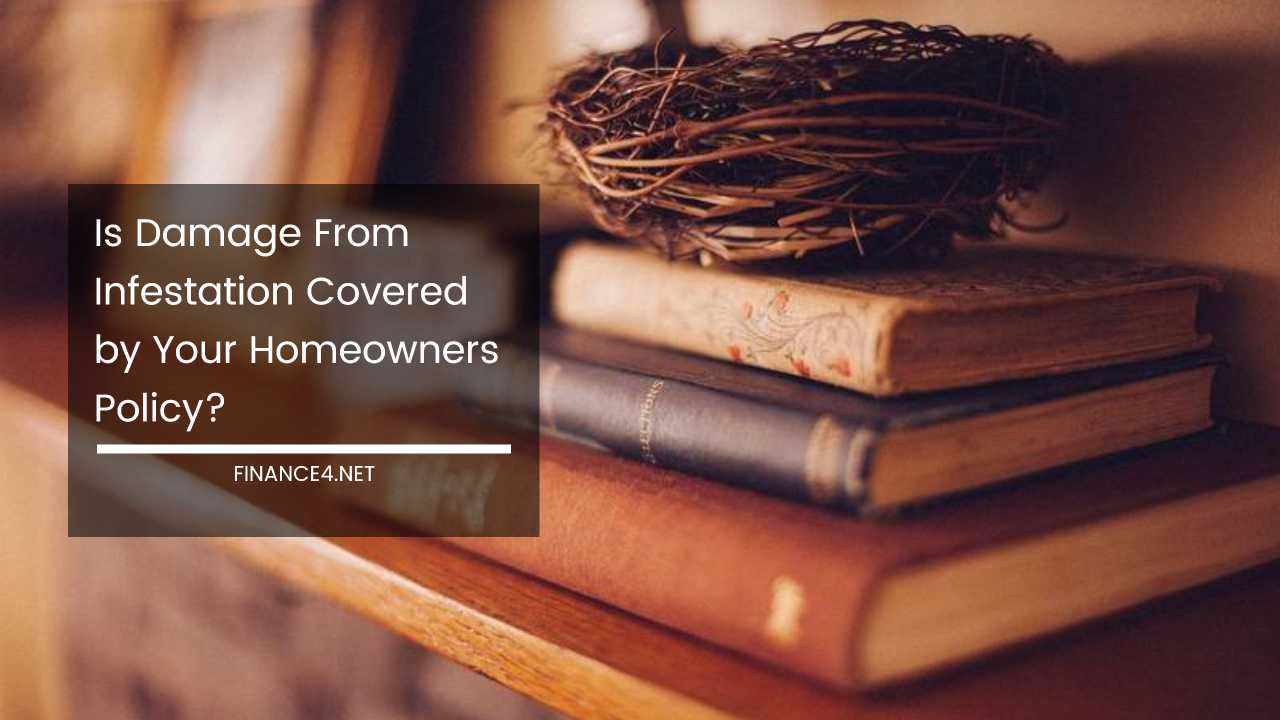Is Damage From Infestation Covered by Your Homeowners Policy?

The Unwelcome Guests: Protecting Your Home from Infestations and Insurance Coverage
Sharing your home with a loving family pet is one thing, but cohabitating with unwanted critters is a whole other story.
Unfortunately, even the most vigilant homeowner can find themselves facing an infestation of termites, rodents, or other pests.
These unwelcome guests not only disrupt your peace of mind, but they can also cause significant damage to your property and pose health risks to your family.
In the midst of this unwelcome invasion, a crucial question arises: will your homeowners insurance cover the costs associated with eliminating the pests and repairing the damage they’ve caused? The answer, in most cases, is a resounding no.
This guide delves into the complexities of infestation coverage in homeowners insurance, explores preventative measures to keep your home pest-free, and equips you with the knowledge to recognize and address infestations before they escalate.
Understanding the Limits of Coverage in Homeowners Insurance
Homeowners insurance provides a crucial safety net against unforeseen disasters. However, it’s essential to understand the specific perils covered by your policy. When it comes to infestations, here’s why they typically fall outside the scope of coverage:
- Gradual vs. Sudden Damage: Homeowners insurance is designed to protect against sudden and accidental events, such as fire, theft, or weather damage. Infestations, however, are gradual occurrences. Over time, pests like termites or rodents slowly invade and cause damage. Since these issues can be prevented through proper home maintenance, they aren’t covered by insurance.
- Focus on Preventable Issues: Maintaining your home’s structural integrity and addressing potential entry points for pests is your responsibility. For example, sealing cracks in your foundation, repairing damaged screens, and eliminating moisture problems can significantly deter unwanted visitors. Since these actions are within your control, the resulting damage wouldn’t be covered by insurance.
- Limited Coverage for Specific Events: There are rare situations where an infestation might be linked to a covered event. For instance, imagine a powerful storm damages your roof, creating an opening for raccoons to enter your attic and wreak havoc. Here, the damage caused by the raccoons (but not the initial roof damage) might be covered under your policy, as the infestation was a consequence of a sudden and accidental event.
Key Takeaway: Don’t make the mistake of assuming your homeowners insurance will handle everything. Carefully review your specific policy’s terms and exclusions to avoid surprises down the line if you encounter an infestation.
When Coverage Might Be Available (But Not Guaranteed)
While uncommon, some insurance companies offer optional coverage for specific pests, like termites. This additional coverage typically comes at an increased premium.
If you live in an area with a high risk of termite infestations, for instance, consider exploring this option.
However, remember that even with this add-on coverage, there might be limitations and deductibles involved. Always consult your insurance agent to understand the specifics of any optional pest coverage.
Prioritization: Preventing Infestations Before They Start
Since relying solely on insurance isn’t ideal, the best course of action is to prevent infestations altogether. Here are some proactive measures you can take to fortify your home against unwanted guests:
- Become a Home Maintenance Master: Develop a habit of conducting regular inspections of your property, looking for potential entry points for pests. Seal cracks in your foundation, repair damaged screens on windows and vents, and trim tree limbs away from your house to prevent them from creating bridges for pests.
- Moisture Control is Key: Many pests, like termites and cockroaches, thrive in moist environments. Address any moisture issues in your home promptly. Fix leaky pipes, ensure proper ventilation in crawl spaces and attics, and use dehumidifiers in damp areas to create a less hospitable environment for these unwelcome guests.
- Cleanliness is Next to Godliness (and Pest-Free Living): Maintain a clean and clutter-free living space. Store food in airtight containers, dispose of garbage regularly, and vacuum crumbs and debris to eliminate potential food sources for pests. This not only discourages them from taking up residence, but it also makes it easier to detect signs of an infestation early on.
- Consider Professional Help: Preventative pest control services offered by qualified exterminators can be a wise investment. A professional can identify potential problems with your property that might make it susceptible to infestations and take steps to deter pests before they become a major issue.
The Signs They’ve Arrived: Recognizing Common Infestations
Early detection is crucial for minimizing damage and keeping costs down. Here’s a breakdown of some common warning signs for different types of pests, allowing you to identify an infestation before it spirals out of control:
- Termites and Ants: Keep an eye out for mud tubes on foundation walls or interior surfaces. These tubes are constructed by termites as a protective passage. Additionally, look for hollow-sounding wood when tapped, discarded wings near windows or doors (a sign of swarming termites), and the presence of the insects themselves. A musty or sweet odor can also indicate a termite infestation.
- Rodents: Signs of a rodent infestation include droppings (small, pellet-shaped for mice, larger and rod-shaped for rats) around your home, particularly in areas where food is stored. Gnaw marks on furniture, wires, or baseboards can also indicate rodent activity. A musky odor and small holes around your foundation or in walls are additional signs to watch out for.
- Bed Bugs and Fleas: These blood-sucking pests leave itchy bites on human skin, typically in clusters or lines. You might also see the actual bugs themselves, particularly around bedding, furniture, and in cracks and crevices. Bed bugs are reddish-brown, flat, and about the size of an apple seed. Fleas are small, wingless insects that jump.
Taking Action When Faced with an Infestation
If you suspect an infestation in your home, don’t delay. The longer you wait, the more extensive the damage can become and the greater the risk to your health and property. Here’s what to do:
- Contact a Pest Control Professional: A qualified exterminator can assess the situation, identify the specific pest you’re dealing with, and recommend the most effective course of treatment. Look for a licensed and insured professional with experience in dealing with your particular pest problem.
- Document Everything: Take photos and videos of the damage caused by the infestation. This will be helpful evidence when filing a claim with your insurance company (even if they ultimately deny coverage for the damage itself). Additionally, keep receipts for any extermination services you utilize.
Living with Wildlife – A Special Consideration
While some creatures like rodents and insects are considered pests, others like squirrels or raccoons might be seen more as wildlife.
Homeowners insurance typically excludes damage caused by wildlife as well. However, some policies might offer limited coverage for specific situations, such as when wildlife enters your home through a hole created by a covered event (like a storm). Consulting your insurance agent is essential to understand the specifics of your policy regarding wildlife.
Final Thoughts: Defense is the Best Offense
By prioritizing preventative measures, maintaining a clean and well-maintained home, and seeking professional help when necessary, you can significantly reduce the risk of unwanted guests taking over your living space.
Remember, early detection and prompt action are key to minimizing damage and keeping costs associated with infestations under control.
While homeowners insurance might not cover the cost of eradicating pests or repairing the damage they cause, investing in preventative measures can save you money and heartache in the long run.
Living in a pest-free environment not only protects your property but also ensures the health and well-being of your family. So take charge, become a proactive defender of your home, and keep those unwelcome guests at bay!



